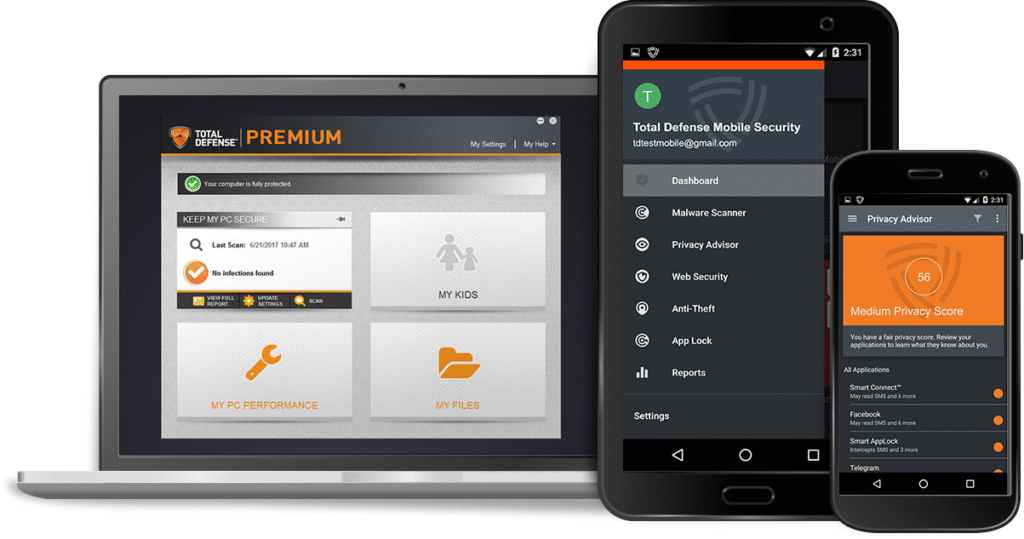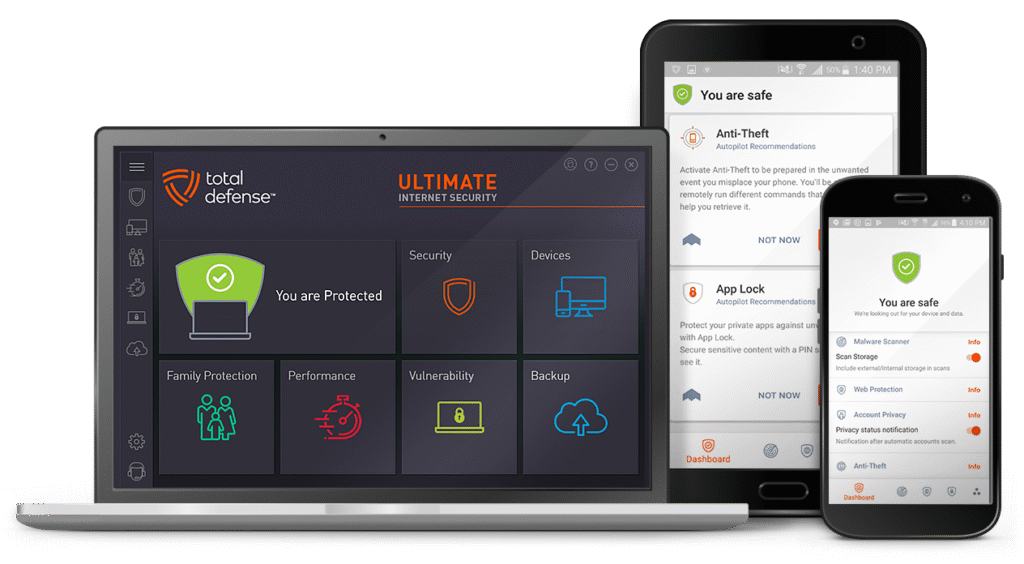In today’s digital age, protecting your devices and personal data is more crucial than ever. Advanced security software plays a vital role in safeguarding against malware, ransomware, viruses, and other cyber threats. Total Defense Login However, the effectiveness of such software is often enhanced when your security settings are properly synchronized across all your devices through your account portal.
This extensive guide will explore the significance of syncing your security preferences via your security software account, the benefits it offers, and a detailed walkthrough of how to efficiently manage and synchronize your security settings. Login Total Defense Whether you are new to managing online security software accounts or looking to optimize your protection, this article will provide you with in-depth insights and actionable steps.

Understanding the Importance of Synchronizing Security Preferences
Before diving into the synchronization process, it is essential to understand why syncing your security settings is important. Many users operate multiple devices such as laptops, desktops, tablets, and smartphones, Total Defense Login each potentially requiring protection. Managing security settings independently on each device can be tedious and prone to inconsistency.
Synchronizing your Login Total Defense settings through your online account offers several advantages:
- Consistency Across Devices: Your security preferences, such as firewall rules, scan schedules, and threat notifications, are uniformly applied to all connected devices.
- Time-Saving: You avoid repetitive manual configuration on each device.
- Centralized Management: Monitor and modify settings from a single dashboard accessible anywhere.
- Improved Security Posture: Consistent updates and policies ensure all devices maintain optimal protection.
- Easy Recovery: In case of device loss or replacement, your preferences are restored effortlessly when you sign in to your account.
What Types of Security Settings Can Be Synced?
Different security solutions offer various settings to be synced through your account, but typically these include:
- Real-Time Protection Settings: Controls how the software monitors your system continuously.
- Firewall Configurations: Rules that regulate network access and data traffic.
- Scan Preferences: Scheduled scan times, types of scans (quick, full), and frequency.
- Update Settings: How and when the software updates virus definitions and program versions.
- Notification Preferences: Alerts about detected threats, subscription status, and recommended actions.
- Parental Controls: Restrictions on internet content, usage schedules, and app access.
- Backup and Recovery Settings: Configurations for data backup frequency and restoration options.
Being aware of what can be synchronized helps in making comprehensive security decisions.
Preparing for Synchronization
Before initiating synchronization, certain preparations ensure a smooth and secure experience:
Create or Access Your Account
Most security software requires you to create an online account. This account serves as the centralized hub where your settings are stored and managed.
- If you don’t have an account, visit the official website or app to register.
- Use a strong, unique password and enable multi-factor authentication if available.
Ensure All Devices Are Connected
Make sure all your devices intended for synchronization are connected to the internet and have the security software installed.
Update Your Software
Running the latest version ensures compatibility and access to the newest features for synchronization.
Backup Existing Settings (Optional)
Some programs allow exporting current settings. Backing them up locally before syncing can be a precautionary measure.
Step-by-Step Process to Sync Security Settings
While specific steps can vary by software, the general process involves:
Step One: Log In to Your Online Account
Access your security software’s official website or app and sign in with your registered credentials.
Step Two: Navigate to the Settings or Device Management Section
Look for sections labeled “Settings,” “Device Management,” or “Account Preferences” where synchronization options are located.
Step Three: Enable Syncing or Auto-Sync
Turn on the option to synchronize security settings. Some programs may have a toggle switch or checkbox to enable this feature.
Step Four: Select Devices to Sync
Choose which devices will be included in the synchronization. You may also add or remove devices as needed.
Step Five: Customize Sync Preferences
Decide which types of settings to sync. You might want to sync everything or only specific categories such as firewall rules or scan schedules.
Step Six: Save and Apply Changes
Confirm your selections and apply changes. The software will then begin syncing your preferences across selected devices.
Managing Synchronization Settings
After initial setup, ongoing management is key for maintaining security:
- Review Settings Periodically: Regularly check your account dashboard to ensure all devices are syncing correctly.
- Add New Devices Promptly: When you purchase new devices, install the security software and link them to your account.
- Update Sync Preferences as Needed: Adjust which settings are synced based on your evolving security needs.
- Handle Sync Conflicts Carefully: If conflicting settings arise between devices, review and decide which version to keep.
Benefits of Cloud-Based Security Settings
Many modern security solutions store your settings in the cloud. This offers additional benefits:
- Access Anywhere: Manage your security preferences from any device with internet access.
- Automatic Updates: Sync your settings seamlessly when you make changes without manual intervention.
- Disaster Recovery: Easily restore your settings if your device is lost, stolen, or replaced.
- Cross-Platform Compatibility: Supports synchronization across different operating systems such as Windows, macOS, Android, and iOS.

Troubleshooting Synchronization Issues Sometimes, synchronization might not work as expected. Common issues and solutions include:
Connectivity Problems
- Ensure devices have stable internet connections.
- Disable VPNs or firewalls temporarily if they block synchronization.
Outdated Software
- Update security software to the latest version on all devices.
Account Authentication Errors
- Verify login credentials.
- Reset passwords if necessary.
Sync Conflicts
- Manually resolve conflicting settings via the account portal.
Device Not Appearing
- Reinstall security software on the missing device.
- Ensure it is linked to the correct account.
Advanced Tips for Optimizing Security Sync
To maximize the effectiveness of synchronization, consider these tips:
- Enable Multi-Factor Authentication (MFA): Adds a layer of security to your account, reducing risk even if login credentials are compromised.
- Regularly Audit Linked Devices: Remove access for devices you no longer use or recognize.
- Use Strong, Unique Passwords: For both your security account and email associated with it.
- Enable Notifications for Account Changes: Stay informed of new device connections or setting modifications.
- Schedule Regular Security Reviews: At least once every few months, revisit your synchronization preferences and overall account security.
The Role of Customer Support in Synchronization
If you encounter persistent issues or have questions about syncing your security settings, Login Total Defense reaching out to customer support can be invaluable. Support teams can guide you through advanced troubleshooting, clarify account management options, and ensure your settings are secure and correctly synchronized.
Make sure to have your account details, device information, and software version ready when contacting support for faster assistance.
The Future of Security Setting Synchronization
As cybersecurity continues to evolve, so do synchronization technologies. Future advancements may include:
- Artificial Intelligence Integration: AI could automatically adjust your security settings based on threat intelligence.
- Biometric Authentication for Account Access: Enhanced login security for managing synchronization.
- Deeper Integration with Operating Systems: Allowing more seamless and granular control of security preferences.
- Cross-Software Synchronization: Potential for syncing preferences across multiple security platforms for holistic protection.
Staying updated with new features ensures you make the most of your security software.

Summary
Synchronizing your security settings across all your devices through your account is a Login Total Defense powerful way to maintain consistent protection and simplify management. By understanding the importance of synchronization, Total Defense Login preparing properly, following step-by-step processes, and managing your settings wisely, you enhance your overall digital safety.
This guide offers everything needed to confidently handle security preferences, Login Total Defense resolve issues, and optimize your security software’s functionality. Total Defense Login Regular maintenance, coupled with the use of advanced security features, ensures your defenses remain robust in an ever-changing cyber threat landscape.
